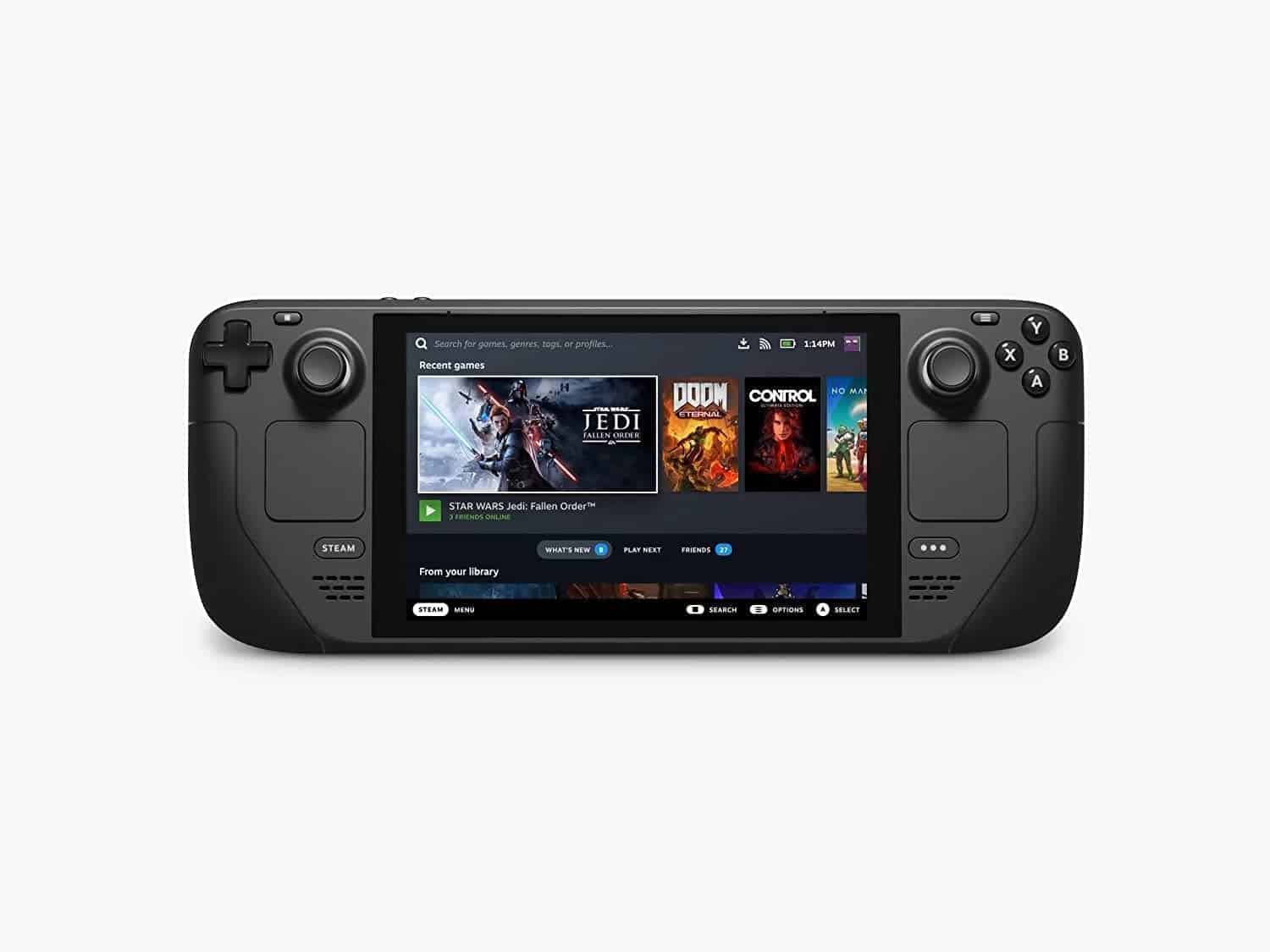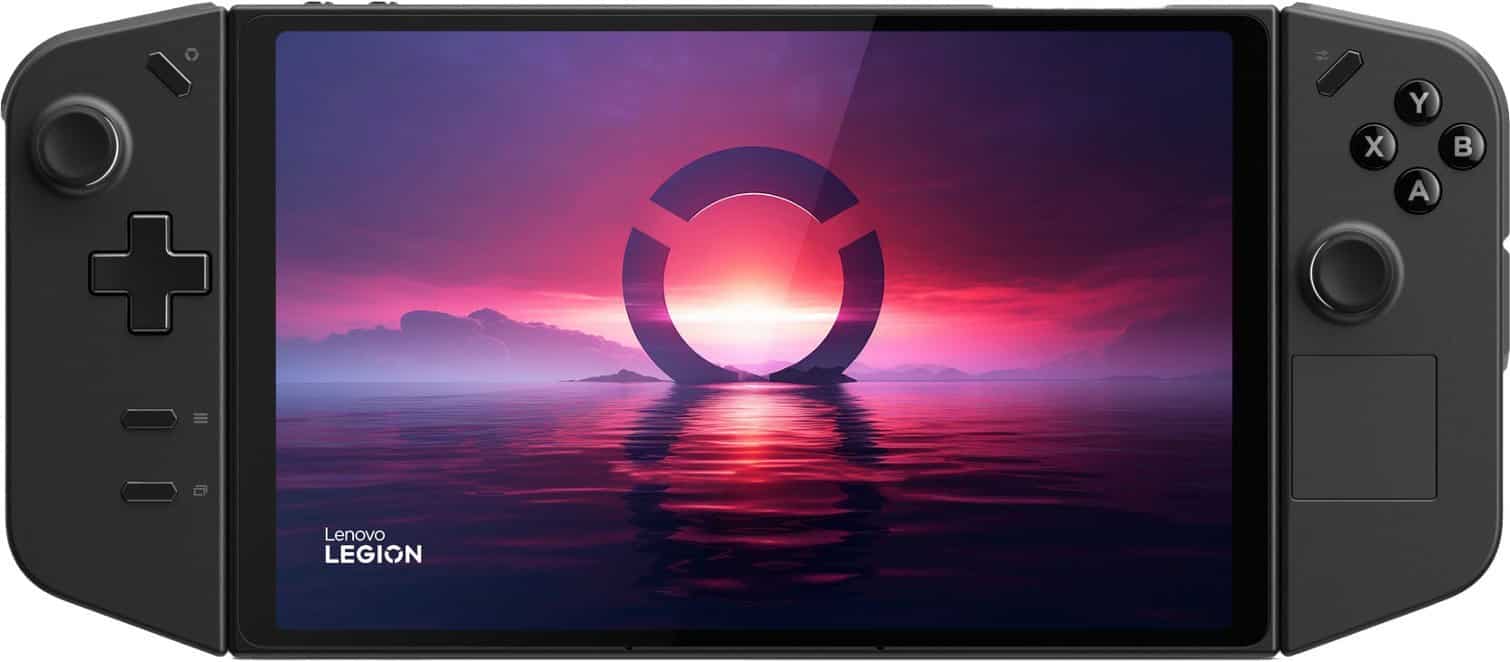You can trust VideoGamer. Our team of gaming experts spend hours testing and reviewing the latest games, to ensure you're reading the most comprehensive guide possible. Rest assured, all imagery and advice is unique and original. Check out how we test and review games here
Let’s break down the differences between the Lenovo Legion Go vs Steam Deck, so you can know which one is right for you.
The Steam Deck was released over a year ago now. Following on from its extreme popularity, more and more tech companies have been looking to get a share of the action, making for a busy year for handheld gaming. We’ve seen the release of the Asus ROG Ally and the PlayStation Portal announced. The Lenovo Legion is one of the latest to join the fray.
It looks well set to be a popular device too, with a storage capacity of up to 1TB, a 144Hz refresh and a snappy processor. We’ll be putting it head-to-head with the Steam Deck in a range of categories. The aim here is to give you a complete overview of both devices so you can get a sense of which one suits your needs the best.
We won’t be discussing performance yet, as we will need to wait to get our hands on the Legion Go before we can know its benchmarks. Instead, we will only be comparing confirmed specs and features. Let’s get into it.
How does the performance compare between the Steam Deck and the Lenovo Legion Go?
| Specification | Steam Deck | Lenovo Legion Go |
|---|---|---|
| Display size | 7in | 8.8in |
| Display resolution | 1280 x 800p | 2560 x 1600p |
| Refresh rate | 60Hz | 144Hz |
| GPU | AMD RDNA 3 | AMD RDNA 3 |
| CPU | AMD Zen 2 | AMD Ryzen Z1 Extreme |
| RAM | 16GB LPDDR5 | 16GB LPDDR5x |
| Storage | 64GB, 256GB, 512GB | 512GB, 1TB |
As you can see there are plenty of spots of overlap and difference between these two handheld gaming devices.
Overall, the Legion Go does boast the more powerful specs. Its Ryzen Z1 Extreme CPU has an impressive 8 Zen 4 cores and is significantly more capable than the Zen 2 CPU found in the Steam Deck. On top of that, the Go has the more advanced LPDDR5X RAM, which grants it even more of an edge. That said, the RAM count is more important and here the two can’t be separated.
For both devices, you have some freedom when it comes to storage. Each comes with different versions for different prices (which we’ll be covering in more detail later). As you can see the Legion Go has the larger overall option with up to 1TB of storage, more than enough to store a vast gaming library. Another thing to note is that the 64GB version of the Steam deck is the only version of either console that uses a slower eMMC storage technology, which will mean longer load times.
How does the display of the Lenovo Legion Go compare to the Steam Deck?
Display is such an important part of any handheld console that it’s worth looking at in closer detail. Here the Lenovo Legion Go comes out on top again. Firstly, and most obviously, it has the larger display, quite a chunk larger too – 8.8 inches versus 7 inches for the Steam Deck. For some, this might actually be a disadvantage as it makes the device slightly harder and heavier to move around. For most, however, this will be a win. At 8.8 inches it will still be fully portable and simply allow you to get more engrossed in the gameplay.
The Legion Go matches this larger screen with a higher resolution. In fact, the sheer number of pixels is almost double that of the Steam deck. Some of this is explained by the larger screen, but overall the Legion Go is sure to be crisper. With a 144Hz refresh rate, the Legion Go even beats the likes of the Asus ROG Ally, and easily outperforms the 60Hz refresh of the Steam Deck.
There is one possible catch, however. This larger, crisper and faster display will draw more power, possibly meaning that the Steam Deck could have the edge when it comes to battery life, but we will need to get hands-on with the Legion Go before we can know that for sure.
Lenovo Legion Go vs Steam Deck – Price
As we’ve already discussed, both of these devices come in a few different versions, each with different storage options. The Steam Deck has three different buying options. You can get 64GB of storage for $399, 256GB for $529, and 512GB for $649.
Meanwhile, there are two iterations of the Lenovo Legion Go. A Legion Go with 512GB of storage will set you back $699, while it is $799 for 1TB.
This means, comparing apples to apples in terms of storage, the Steam deck does have the edge, by $50. However, you should keep in mind that you are getting more powerful specs for this higher price.
Steam Deck

MSRP
$309, $349, $389
Display size
7 inches
Resolution
1280 x 800p
RAM
8GB
Storage
64GB, 256GB, 512GB
Lenovo Legion Go 1TB

Display
8.8in
CPU
AMD Ryzen Z1 Extreme
RAM
16GB
Storage
1TB
Final word
Both of these devices are capable and powerful handheld consoles and either one would make a great addition to any gamers set-up. Picking between them is really a case of personal preference and budget limitations, rather than the crowning of an outright ‘winner’.
If money is your main concern, the Steam Deck has much more affordable options. You can get the 64GB version for as little as $399. And that’s just brand new too, with Valve itself selling renewed consoles for even less.
If you’re interested in sheer gaming performance and have the budget for it, the Lenovo Legion looks set to be the more premium offering. With a larger and more advanced screen, a faster processor and a larger storage option, it looks likely to be one of the most capable portable consoles on the market. If you’re looking for where to buy the Lenovo Legion Go, we’ve got you covered.









